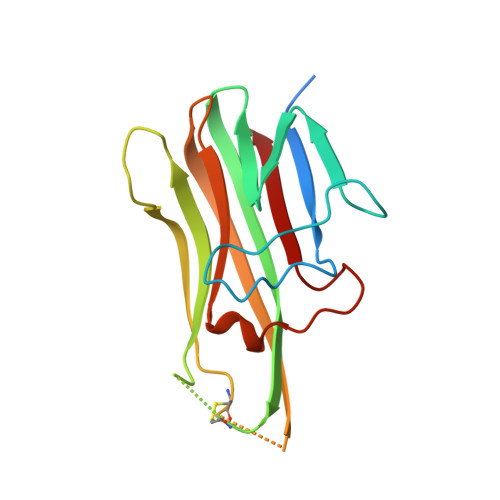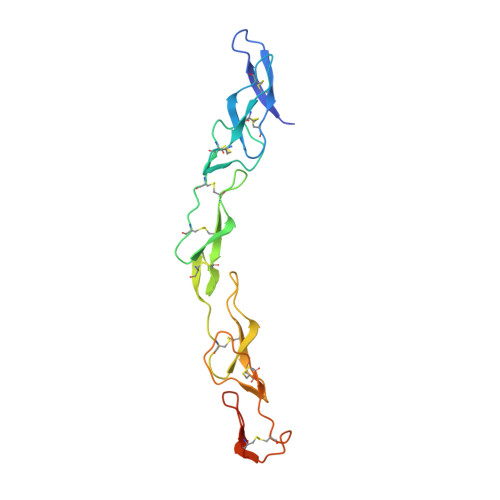Mechanistic basis for functional promiscuity in the TNF and TNF receptor superfamilies: structure of the LIGHT:DcR3 assembly.
Liu, W., Zhan, C., Cheng, H., Kumar, P.R., Bonanno, J.B., Nathenson, S.G., Almo, S.C.(2014) Structure 22: 1252-1262
- PubMed: 25087510
- DOI: https://doi.org/10.1016/j.str.2014.06.013
- Primary Citation of Related Structures:
4EN0, 4J6G, 4KG8, 4KGG, 4KGQ - PubMed Abstract:
LIGHT initiates intracellular signaling via engagement of the two TNF receptors, HVEM and LTβR. In humans, LIGHT is neutralized by DcR3, a unique soluble member of the TNFR superfamily, which tightly binds LIGHT and inhibits its interactions with HVEM and LTβR. DcR3 also neutralizes two other TNF ligands, FasL and TL1A. Due to its ability to neutralize three distinct different ligands, DcR3 contributes to a wide range of biological and pathological processes, including cancer and autoimmune diseases. However, the mechanisms that support the broad specificity of DcR3 remain to be fully defined. We report the structures of LIGHT and the LIGHT:DcR3 complex, which reveal the structural basis for the DcR3-mediated neutralization of LIGHT and afford insights into DcR3 function and binding promiscuity. Based on these structures, we designed LIGHT mutants with altered affinities for DcR3 and HVEM, which may represent mechanistically informative probe reagents.
- Department of Cell Biology, Albert Einstein College of Medicine, Bronx, NY 10461, USA; Department of Biochemistry, Albert Einstein College of Medicine, Bronx, NY 10461, USA; Department of Microbiology and Immunology, Albert Einstein College of Medicine, Bronx, NY 10461, USA.
Organizational Affiliation:





















